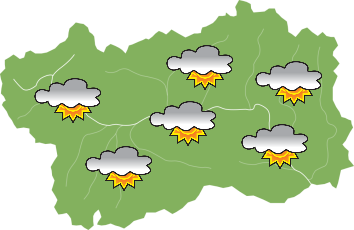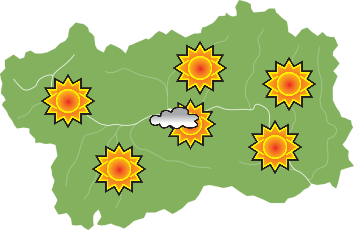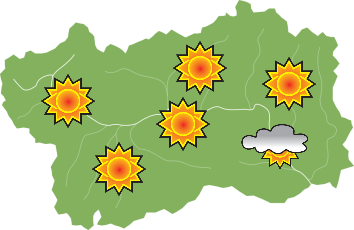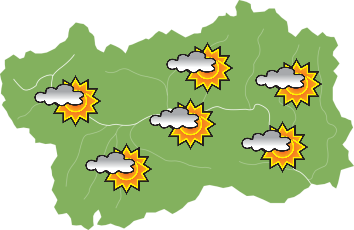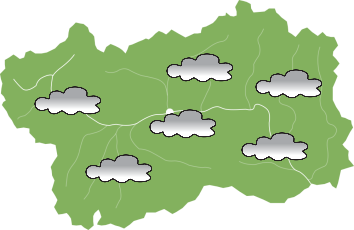Today we will observe the manifestations of two phenomena. The first, which is associated with the great glaciation of the past, left evident traces of glacial morphology, among which, the roche moutonée, characterised by its stripes and its typical shape, and the erratic boulders, rocky blocks transported by the glacier and deposited here during the withdrawal phase. The second phenomenon occurred during a subsequent period, and is known among the scientific community as “deep slope gravitative deformation”. In the presence of determined conditions of instability (which still exist), the slope is subject to a very slow, slightly downward slipping, causing cracks in the rock, evident deformations and deep trenches.
To this context, which is exemplary from a geological-geomorphological point of view, we should add noteworthy cultural aspects, such as the rock art that finds its expression here in the “coppelle” incisions on the roche moutonée, and the neolithic necropolis, which is one of the richest and most significant of its kind in the Aosta Valley.
The necropolis, which was discovered in 1968 near the village of the same name, stands in the most depressed area of the roche moutonée. The archaeological digs brought 66 cist tombs to light, that is, tombs shaped like a stone drawer protruding from the land, consisting of four upright slabs and a covering slab placed over the sides of the tomb. Today, most of the tombs have been covered, three of them remain visible. Nearby, about 20 meters west of the tombs, the rock carvings are also visible.
More information on the archaeological aspects with 3D images can be found on the website https://digitavollein.eu/
The visit to the geological site also offers a stupendous balcony over the central valley.
How to get there:
From the Nus exit of the A5 motorway, take the S.S. 26. Near the entrance to the road for Chetoz, on the right is the Quarry of La Plantaz.
To reach Vollein, from the Chetoz crossroads, proceed on the right in the direction of Séran, then towards Pillod. Having reached the first crossroads, take the road for Argnod, Vignil on the right, until you reach the inhabited area of Vollein.
Technical notes:
Altitude: between 500 m and 900 m
Overall duration of the tour: 1/2 day
Recommended period: spring, summer, autumn, in winter the itinerary is also practicable in the absence of snow.
The itinerary:
Having parked the car near the inhabited area of Vollein, go back on foot for a distance of approximately 200 m; walk down along a trail marked off by a wooden fence towards a depressed area that will allow you to cross the main trench by going left. From here, it is possible to reach the central part of the rise where the roche moutonnée area is situated with the erratic boulders, the necropolis and the areas that are more intensely pervaded by large cracks.
Although the latter two preferential observation points have been identified, there are erratic boulders and cracks throughout the area and therefore moving observation is required.
We recommend that you visit this site at sunset.





